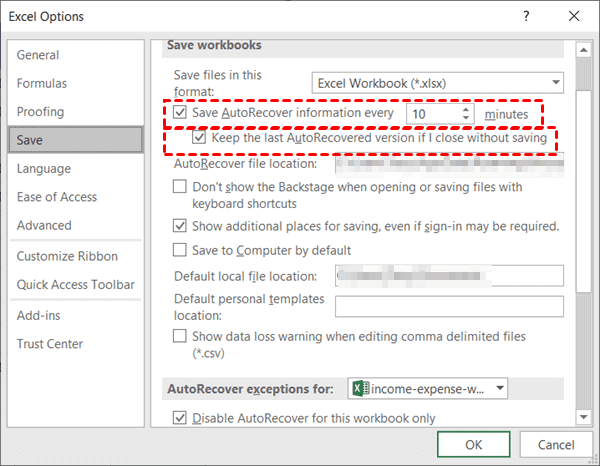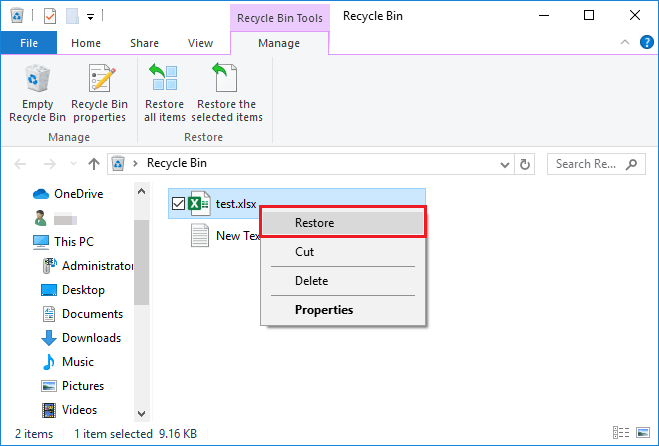Recover Deleted Excel Files: Quick and Simple Methods

Are you on the edge of a productivity cliff, watching your hard work go down the drain because you or someone else accidentally deleted an Excel file? Don't worry; there's a way out of this dilemma. Knowing how to recover deleted Excel files quickly and efficiently can save time, reduce stress, and keep your business running smoothly.
Where Do Deleted Files Go?

When you delete an Excel file, it might seem like it vanishes into the digital void. However, the reality is much more forgiving:
- Recycle Bin: If you delete a file from your computer, it often ends up here first. It’s worth checking the Recycle Bin to recover a recently deleted file.
- Recovered Items: For files deleted from OneDrive, SharePoint, or Office 365, look in the Recycle Bin or Deleted Items folder of these services.
- Backup: If you’ve set up backups on your computer or cloud storage, your deleted file could still be there, waiting for recovery.
Recovering Files from Local Storage

Here’s how to recover your Excel file if it’s been deleted locally:
Method 1: Check the Recycle Bin

- Open the Recycle Bin on your Windows PC.
- Search for your file. Use the search tool for quicker results.
- If found, right-click on the file and choose “Restore” to recover it.
Method 2: Use Windows File History or Previous Versions

Both Windows File History and Previous Versions can save you in situations where the Recycle Bin isn’t an option:
- Navigate to the folder where your Excel file was stored.
- Right-click on the folder and select “Restore previous versions” or go to File History to recover an older version of the file.
🔍 Note: Make sure File History or System Protection is enabled for this method to work. You can find these settings under Control Panel > System and Security > File History or System Protection.
Recovering Files from Cloud Storage

OneDrive and SharePoint

If your file was synced with OneDrive or SharePoint, follow these steps:
- Visit the site or app where your file was stored (OneDrive, SharePoint).
- Navigate to the Recycle Bin or Deleted Items folder.
- Find your file, select it, and choose “Restore”.
Dropbox

If you’re using Dropbox, here’s what to do:
- Log into Dropbox.
- Click on the “Deleted files” link.
- Find your Excel file and click “Restore” to retrieve it.
Google Drive

For Google Drive users, the process is straightforward:
- Access your Google Drive account.
- Open the Trash folder on the left side of the screen.
- Locate your file, right-click, and select “Restore”.
Using Recovery Software

When all else fails, consider using file recovery software:
- Recuva: An intuitive software that can recover files from local storage.
- Stellar Data Recovery: Known for its efficiency, particularly with large files like spreadsheets.
- EaseUS Data Recovery Wizard: Offers a user-friendly interface and effective recovery options.
When choosing recovery software, consider:
- The type of file system on your drive (NTFS, FAT32).
- The software's compatibility with your operating system.
- Support for the file formats you need to recover.
💾 Note: Recovery software can only work if the deleted data has not been overwritten. Avoid using the drive from which you're trying to recover data until you've completed the process.
To conclude, the loss of an Excel file doesn't have to be the end of your productivity. By following the steps outlined here, you can recover your files swiftly. Remember to check local storage like the Recycle Bin, use backup systems, and if needed, rely on file recovery tools to bring back your lost data. For those using cloud services, ensure you're familiar with their recycling mechanisms to prevent future headaches.
Can I recover files after emptying the Recycle Bin?

+
Yes, you can often recover files even after emptying the Recycle Bin using recovery software. It’s possible if the data hasn’t been overwritten.
How can I prevent future file loss?

+
Regular backups, both local and cloud, along with careful folder and file management, can significantly reduce the risk of file loss.
Does recovery software work on all types of files?

+
Yes, most recovery software can retrieve various file formats, including Excel files, as long as they’re not damaged or severely overwritten.



